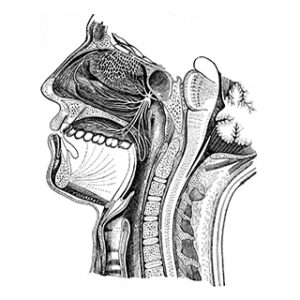I see the ads everywhere – do nasal strips like Breathe Right® work?
What Are Nasal Strips?
Available without a doctor’s prescription, nasal strips are simple, flexible bands with adhesive on one side. The strip is applied adhesive side down just above the flare of the nostril. A spring-like action pulls very gently on the skin, widening the nasal passages so you breathe more easily through your nose. Nasal strips are sold under several brand name and labels. The best known is Breathe Right®.

How Do Nasal Strips Work?
The strips widen the nasal valve. The valve is the narrowest part of your nasal airway, located inside the nose about half way between your nostrils and the bridge of your nose. The strip decreases collapse and constriction so that you breathe more easily.
Are There Any Side Effects?
There are very few. The strip contains no medications. The only reported side effect is occasional skin irritation caused by the adhesive.
The History of Nasal Strips
Breathe Right® was invented in the late 1980’s by Bruce Johnson, a Minnesota man who had nasal congestion at night. The nasal strip was his solution to improve his sleep by opening his nasal passages. Johnson brought the product to CNS, a local medical equipment manufacturer. The company received such positive reviews from local doctors and runners who tried them that they decided to sell the nasal strips. In 1993 CNS received permission from the Food and Drug Administration (FDA) to market them for nasal congestion. In 1995 the FDA approved Breath Rite Strips® for snoring relief.
CNS CEO Dan Cohen turned to the NFL to see if pro athletes might find a performance advantage wearing Breathe Rite Strips®. CNS sent a case of them to NFL team. Before long, football players were scoring touchdowns on TV, wearing Breathe Rite Strips®. This free publicity rocketed sales from $2.8 million in 1994 to $48.6 million in 1995, and up 77 percent in 1996 to $85.8 million. In October, 2006, GlaxoSmithKline (GSK) purchased Breathe Right® for its consumer products line. The reported purchase price was well beyond half a billion dollars.
Breathe Right® remains the dominant brand. There are others in the market though, including INVISIBLE NASAL STRIPS from WoodyKnows® and Better Breath Nasal Strips by EBP Medical. National retailers Target (Up & Up Nasal Strips) and Walmart (Equate Nasal Strips) have their own in-house generic strips.
Will Nasal Strips Help Me Breathe More Easily?
The use of nasal strips by big name NFL stars like Herschel Walker and Jerry Rice boosted the popularity of these inexpensive and easy to use devices. Today, athletes of all kinds wear them. And judging by social media and online comments, many people believe nasal strips are an indispensable workout and performance accessory. There don’t seem to be downsides, so if they work for you, use ‘em!
Will Nasal Strips Help With Snoring?
The makers of Breathe Right® strips earned approval in the mid-1990s to market them as anti-snoring aids. If snoring arises from the nose, that claim seems to have some validity. There is research that shows nasal strips can reduce snoring and improve quality of sleep.
Can Nasal Strips Cure Sleep Apnea?
No. Nasal strips alone are not effective for the treatment of sleep apnea. Improving nasal congestion may have a minor positive impact on the severity of mild Obstructive Sleep Apnea. However, in more severe cases nasal strips are only useful to relieve nasal congestion to make using a CPAP device easier.
If you have a mild case of obstructive sleep apnea, ask your doctor if nasal strips might help as part of your overall treatment plan. People with more severe apnea can use them to make treatments like CPAP or a dental mouthpiece more effective.
What Are the Advantages and Disadvantages of Nasal Strips?
Advantages
- Nasal congestion improvement
- May relieve nasal snoring
- CPAP use is easier
- Drug free
- May improve nasal congestion due to cold or allergy
- Easy to apply and remove
- Available in many sizes and varieties
- Inexpensive
Disadvantages
- Not effective for all breathing problems
- Helps only with nasal-caused snoring
- Does not treat sleep apnea
- Effect to improve exercise not proven with research
- Removal can be painful
- Not practical for most people for daytime use
- Possible adhesive skin irritation
- Hard to use with oily skin
Conclusion
To summarize, nasal strips are safe, easy to use, and may help you breathe easier at night and when exercising. They may also decrease how loudly you snore. However, research has not found proven benefits to athletic performance or for the relief of more severe sleep problems like sleep apnea.

